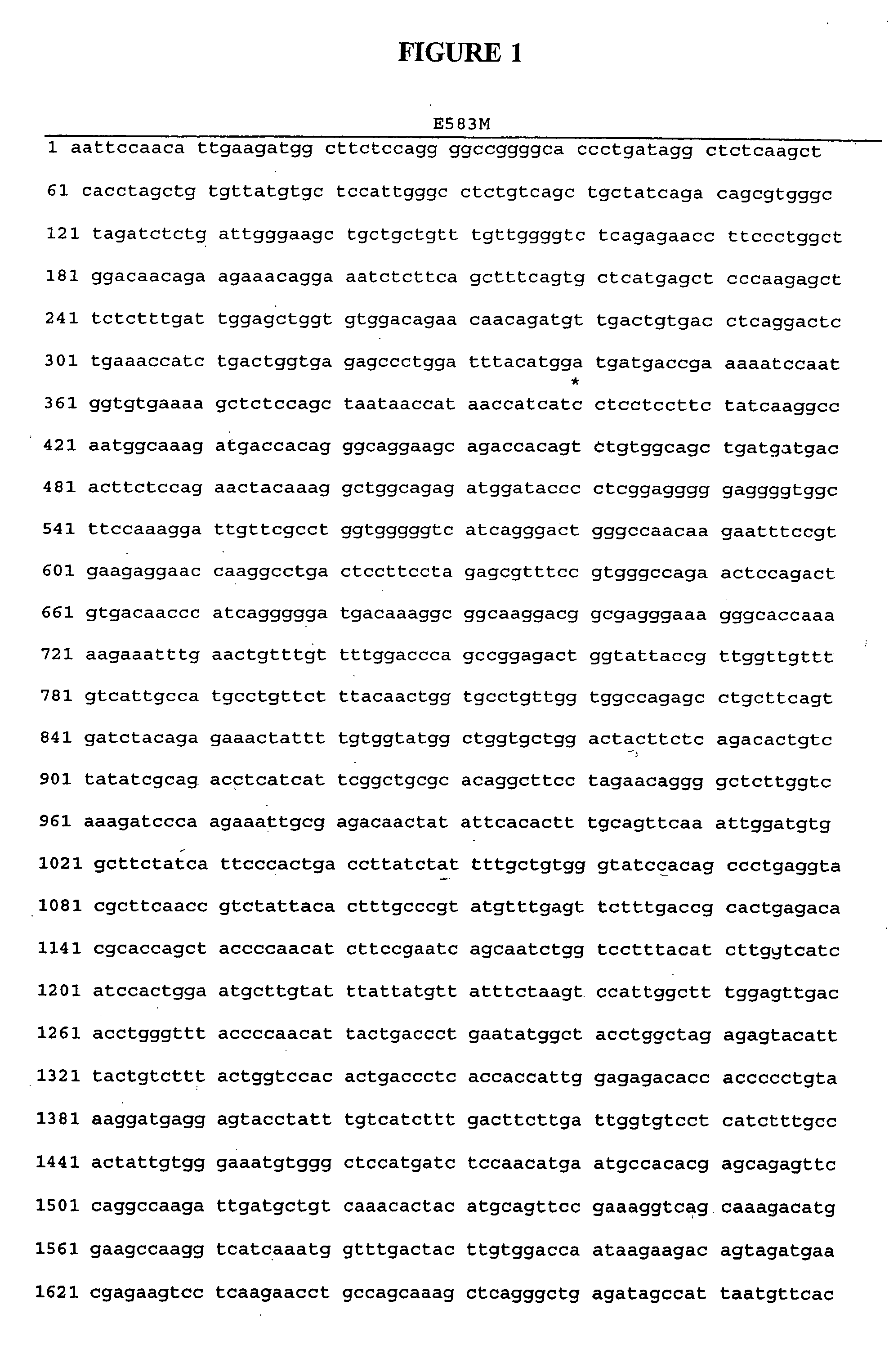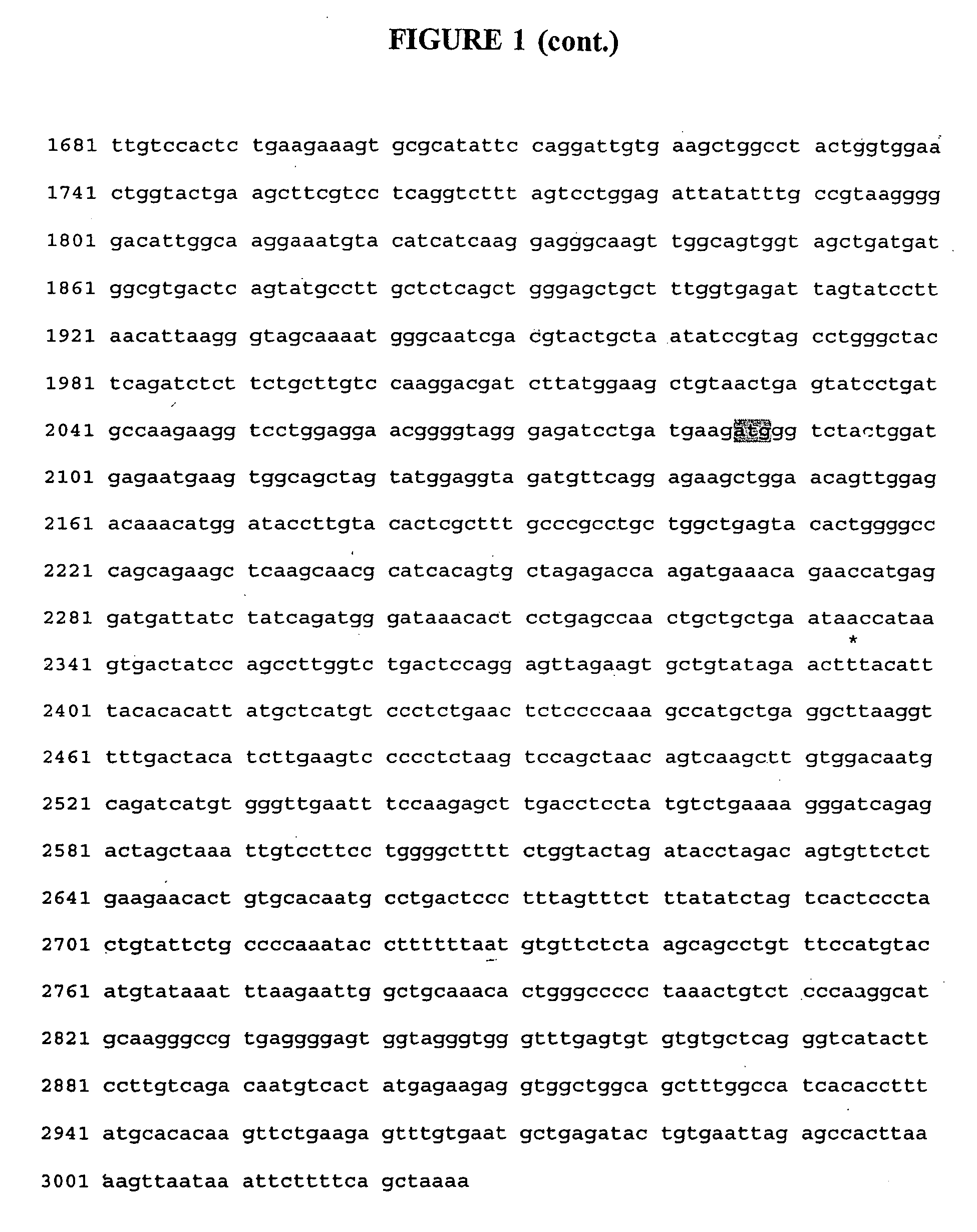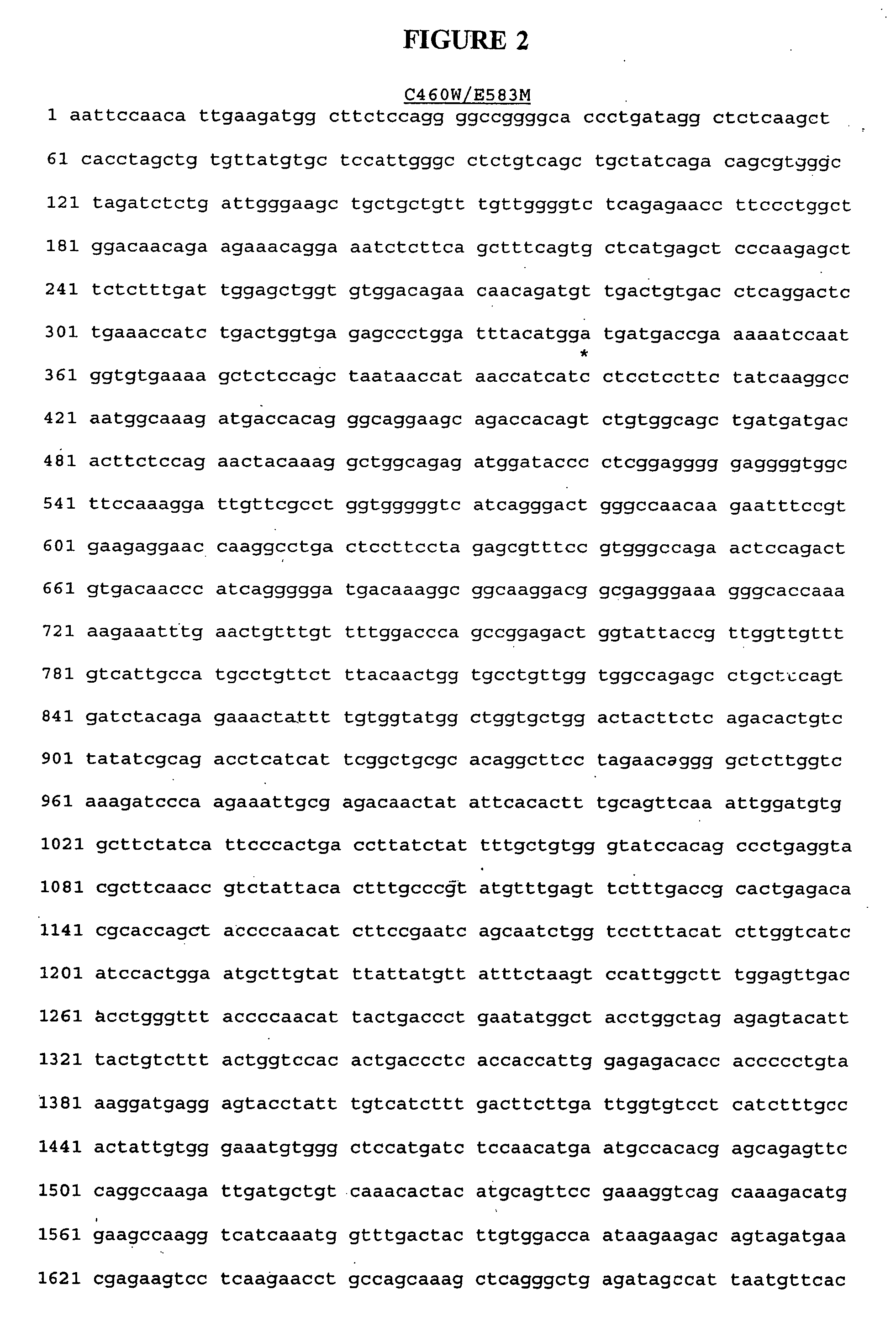Modified cyclic nucleotide gated ion channels
a cyclic nucleotide gated, ion channel technology, applied in the direction of instruments, peptides, animal/human proteins, etc., can solve the problems of inability to assess cell-to-cell variability within a population, lack of spatial resolution of methods, and inability to understand camp signals. to achieve the effect of increasing sensitivity and specificity for camp
- Summary
- Abstract
- Description
- Claims
- Application Information
AI Technical Summary
Benefits of technology
Problems solved by technology
Method used
Image
Examples
example 1
Cell Culture and Channel Expression
[0161] Human embryonic kidney (HEK-293) cells were maintained in culture and infected with adenovirus as known in the art (See, Rich et al. [2001], supra). As described in greater detail in Example 2, an adenovirus encoding the α subunit of the rat olfactory CNG channel (CNG2, CNC 3) with mutations C460W and E583M was constructed using the Quik Change Site-Directed Mutagenesis Kit (Stratagene) and a modification of the AdEasy system (He et al., Proc. Natl. Acad. Sci. USA 95:2509-2514 [1998]; and Orlicky and Schaack, J. Lipid Res., 42:460-466 [2001]). All cells used in cAMP assays were treated with this adenovirus.
[0162] Briefly, HEK-293 were maintained in MEM (Life Technologies Inc.) supplemented with 26.2 mM NaHCO3, 10% (v / v) fetal bovine serum (Gemini), penicillin (50 μg / mL), and streptomycin (501 g / mL), pH 7.0, at 37° C. in a humidified atmosphere of 95% air and 5% CO2. Cells were plated at ˜60% confluence in 100 mm culture dishes twenty-four ...
example 2
Construction of CNG-Channel-Encoding Adenoviruses
[0164] In this Example, the methods used to construct CNG-channel encoding adenoviruses are described. As indicated above in Example 1, point mutations were introduced into the α subunit of the WT rat olfactory CNG channel (CNG2, CNC 3) using the QuikChange Site-Directed Mutagenesis Kit (Stratagene). Overlap extension PCR was used to delete the Ca2+-CaM binding site (amino acids 61-90). A replication-defective adenovirus, in which the channel coding sequence containing the E583M mutation replaced the E1 region, was constructed as known in the art and described previously (Fagan et al., J. Biol. Chem., 274:12445-12453 [2000]). Briefly, the cDNA encoding the mutant channel was ligated into the plasmid pACCMV (See, Gomez-Foix et al., J. Biol. Chem., 267:25129-25134 [1992]) under the control of the cytomegalovirus major immediate early (CMV) promoter between the BamHI and SalI sites. The plasmid was then digested with SalI and ligated wi...
example 3
Assessment of cAMP Sensitivity of CNG Channel Constructs
[0167] To assess the cyclic nucleotide sensitivity of different CNG channel constructs, excised, inside-out patch recordings were made at room temperature (20-21° C.) using an Axopatch-200A patch clamp amplifier (Axon Instruments Inc.). Pipettes were pulled from borosilicate glass and heat polished. Pipettes were lowered onto the cells and gigaohm seals were formed. Patches were excised by shearing cells from the pipette with a jet of liquid. Ionic currents were elicited by 250 ms pulses to membrane potentials of +50 and −50 mV from a holding potential of 0 mV. Current records were sampled at five times the filter setting and stored on an IBM compatible computer. Records were corrected for errors due to series resistance (pipette resistance was 4.1 ±0.1 MΩ). Both the pipette and bath solutions contained (mM): 130 NaCl, 2 HEPES, 0.02 EDTA, and 1 EGTA, pH 7.6. Cyclic nucleotide-induced currents were obtained from the difference ...
PUM
| Property | Measurement | Unit |
|---|---|---|
| membrane potential | aaaaa | aaaaa |
| time | aaaaa | aaaaa |
| cAMP concentration | aaaaa | aaaaa |
Abstract
Description
Claims
Application Information
 Login to View More
Login to View More - R&D
- Intellectual Property
- Life Sciences
- Materials
- Tech Scout
- Unparalleled Data Quality
- Higher Quality Content
- 60% Fewer Hallucinations
Browse by: Latest US Patents, China's latest patents, Technical Efficacy Thesaurus, Application Domain, Technology Topic, Popular Technical Reports.
© 2025 PatSnap. All rights reserved.Legal|Privacy policy|Modern Slavery Act Transparency Statement|Sitemap|About US| Contact US: help@patsnap.com



